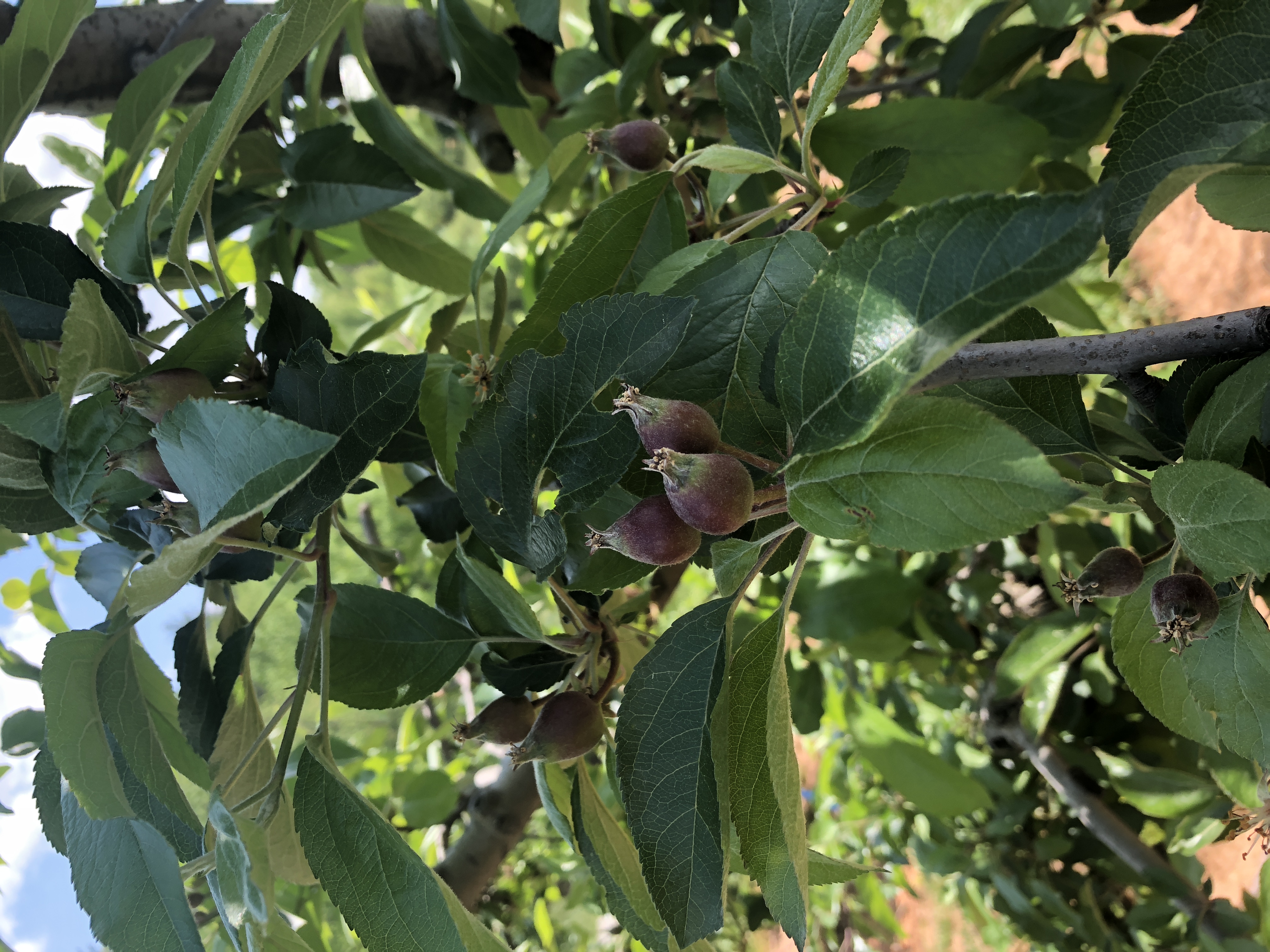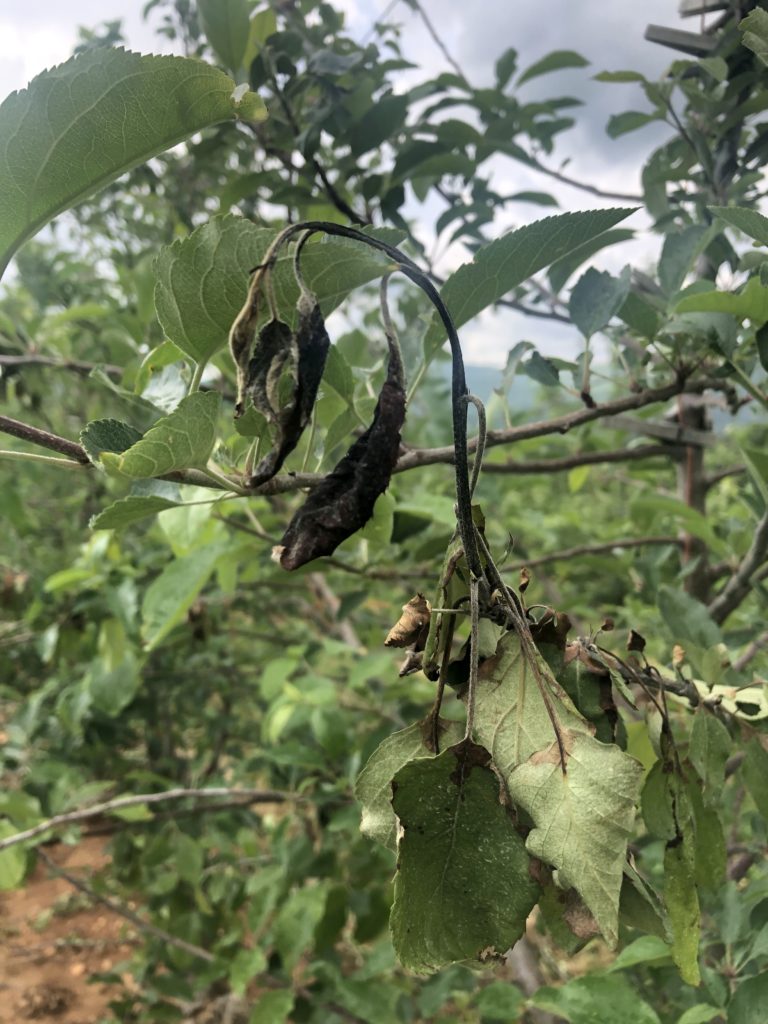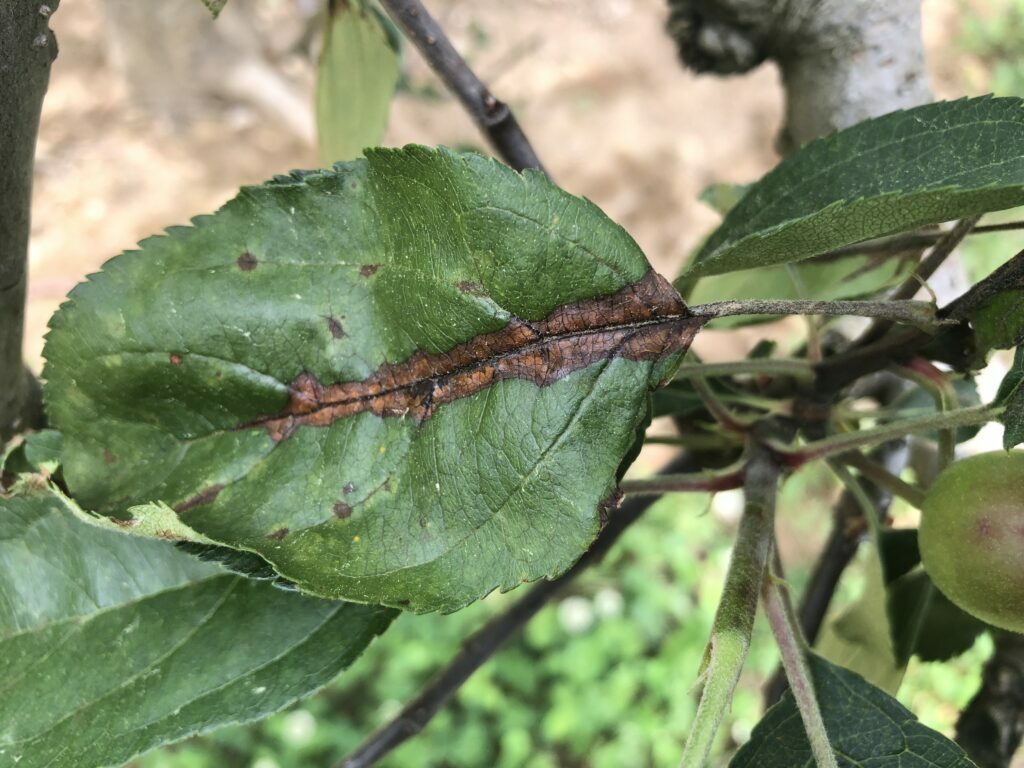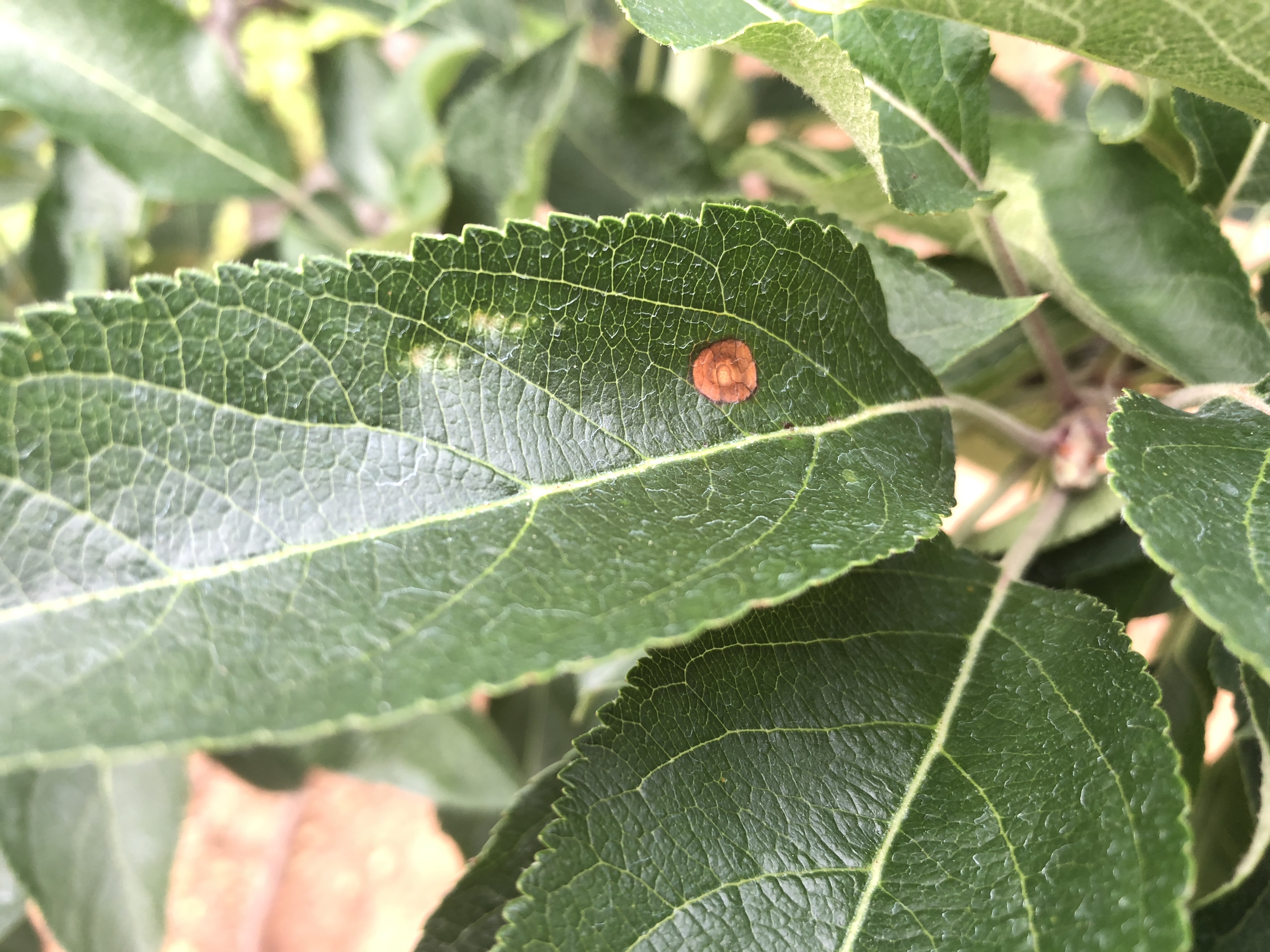Apple Disease Update: Week of April 27, 2025
go.ncsu.edu/readext?1069804
en Español / em Português
El inglés es el idioma de control de esta página. En la medida en que haya algún conflicto entre la traducción al inglés y la traducción, el inglés prevalece.
Al hacer clic en el enlace de traducción se activa un servicio de traducción gratuito para convertir la página al español. Al igual que con cualquier traducción por Internet, la conversión no es sensible al contexto y puede que no traduzca el texto en su significado original. NC State Extension no garantiza la exactitud del texto traducido. Por favor, tenga en cuenta que algunas aplicaciones y/o servicios pueden no funcionar como se espera cuando se traducen.
Português
Inglês é o idioma de controle desta página. Na medida que haja algum conflito entre o texto original em Inglês e a tradução, o Inglês prevalece.
Ao clicar no link de tradução, um serviço gratuito de tradução será ativado para converter a página para o Português. Como em qualquer tradução pela internet, a conversão não é sensivel ao contexto e pode não ocorrer a tradução para o significado orginal. O serviço de Extensão da Carolina do Norte (NC State Extension) não garante a exatidão do texto traduzido. Por favor, observe que algumas funções ou serviços podem não funcionar como esperado após a tradução.
English
English is the controlling language of this page. To the extent there is any conflict between the English text and the translation, English controls.
Clicking on the translation link activates a free translation service to convert the page to Spanish. As with any Internet translation, the conversion is not context-sensitive and may not translate the text to its original meaning. NC State Extension does not guarantee the accuracy of the translated text. Please note that some applications and/or services may not function as expected when translated.
Collapse ▲ Fungicide applications this week should continue target GLS and bitter rot. That’s not to say that other diseases such as apple scab, flyspeck/sooty blotch, and powdery mildew, Marssonina leaf blotch, and Alternaria leaf spot should be ignored. Rather, fungicides used for GLS/bitter rot should provide control against many of these other diseases. Here are some general conventional fungicide application scenarios that would be worth considering for this week:
Fungicide applications this week should continue target GLS and bitter rot. That’s not to say that other diseases such as apple scab, flyspeck/sooty blotch, and powdery mildew, Marssonina leaf blotch, and Alternaria leaf spot should be ignored. Rather, fungicides used for GLS/bitter rot should provide control against many of these other diseases. Here are some general conventional fungicide application scenarios that would be worth considering for this week:
Scenario 1: “I have not applied a strobilurin (FRAC 11; e.g. Flin Extra, Pristine, Merivon, Luna Sensation) fungicide yet this season”. If this is your situation and you are fairly certain your Colletotrichum population causing GLS and bitter rot does not have resistance to strobilurins (FRAC 11), my suggestion would be to spray a strobilurin fungicide + mancozeb this week. While Flint Extra and Luna Sensation provide great control against bitter rot, in our trials at the MHCREC, Merivon has provided superior control of Glomerella. Apply mancozeb at 1/2 rate (3 lb/A) and strobilurin fungicide at the maximum labeled rate.
Scenario 2: “I applied a strobilurin (FRAC 11) fungicide for my last fungicide spray”. Great! This week consider an application of Aprovia (7 fl oz/A) + mancozeb An added bonus is that Aprovia is one of the more potent scab fungicides on the market right now. Unfortunatley, Aprovia has not performed fantastic against flyspeck/sooty blotch in our trials at the MHCREC. One option would be to add a Phos. acid fungicide like ProPhyt into the tank for an added boost against these diseases.
Scenario 3: “I do not feeling like paying for those expensive single-site fungicides.” If you decide to go this route, 3 lb/A mancozeb will likely be alright for most diseases if it doesn’t rain too much. However, given upcoming rain and that the goal right now is to knock down primary inoculum, I’d strongly advise to get at least one application of a FRAC 11 (avoid Sovran) out this week or next. While DMI fungicides are not effective for controlling Glomerella fruit rot or bitter rot in NC, including a more inexpensive and older FRAC 3 like Rally 40WSP or Procure would be helpful in controlling mildew and apple rust.
In recent years, we started spraying ‘Red Delicious’ specific programs at the MHCREC. Why? Because captan is much more effective for controlling Alternaria leaf spot than mancozeb. While in most cultivars, I urge you to hold off on captan until after third cover, Alternaria needs to be targeted now. My suggestion for spraying ‘Red Delicious’ over the next three weeks is the following:
- This Week: Captan 80WDG (2.5lb/A) + FRAC 11 (Luna Sensation, Flint Extra, Merivon, Pristine)
- In 10 days or so: Captan 80WDG (2.5lb/A)
- Approx. 10 days after the 2nd application: Captan 80WDG (2.5lb/A) + FRAC 11 (Luna Sensation, Flint Extra, Merivon, Pristine)
- Red mites also exacerbate Alternaria severity so make sure to scout and apply a mitecide as necessary.
 Lastly… Got shoot blight? Hopefully not, but I received some reports from Polk County last week of both blossom and shoot blight. Given the intense infection periods we had throughout Western NC in early April, scouting for shoot blight should be of primary importance right now. Sometimes in a sea of fruit, minor blossom infections can go unnoticed. While many leaves in a blighted shoot may appear brown, one tell-tale sign of systemic infection by the Erwinia amylovora is a necrotic on blackening mid-vein on leaves just becoming symptomatic.
Lastly… Got shoot blight? Hopefully not, but I received some reports from Polk County last week of both blossom and shoot blight. Given the intense infection periods we had throughout Western NC in early April, scouting for shoot blight should be of primary importance right now. Sometimes in a sea of fruit, minor blossom infections can go unnoticed. While many leaves in a blighted shoot may appear brown, one tell-tale sign of systemic infection by the Erwinia amylovora is a necrotic on blackening mid-vein on leaves just becoming symptomatic.  If you notice an outbreak of blossom blight or shoot blight consider taking the following steps:
If you notice an outbreak of blossom blight or shoot blight consider taking the following steps:
- Try to avoid pruning first thing in the morning as dew and bacterial ooze might be present which can lead to spread of the pathogen causing new infection
- Consider applying a 12 oz/100 gal rate of Kudos to slow down systemic movement of the pathogen. This should also help to prevent additional infections. Make sure to add a water conditioner and a surfactant such as Regulaid or ChemWett.
- After applying Kudos or Apogee, wait until at least the REI is up (12 hours), prune out infections at least 12 inches from the advancing symptom margin
- Follow up with a streptomycin application. Consider the 200 ppm rate and including Regulaid or similar adjuvant.



